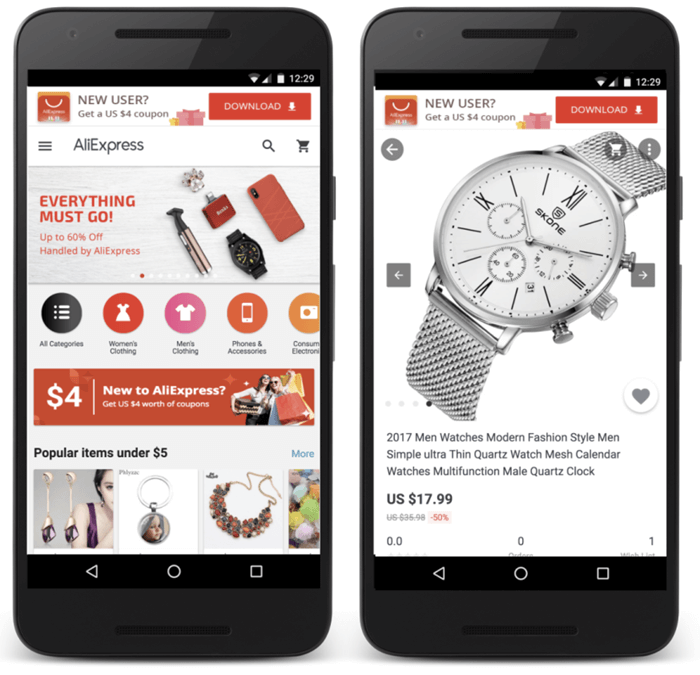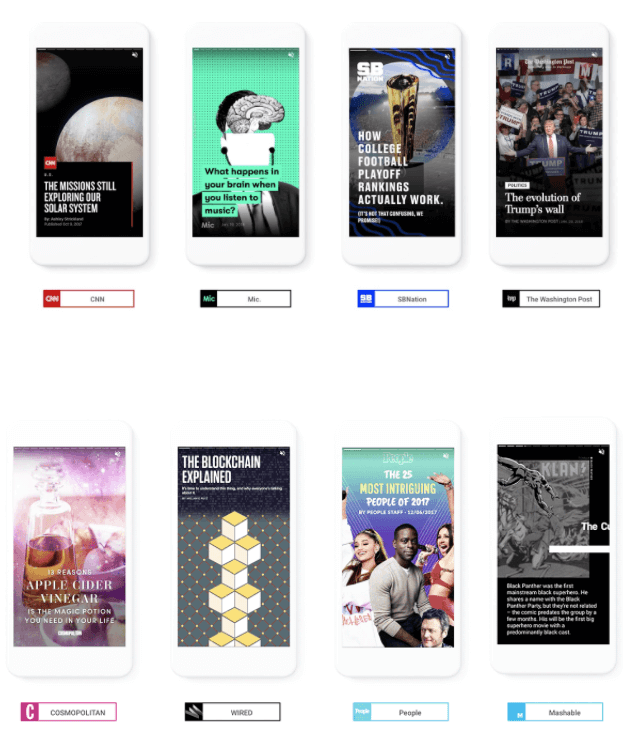
Google AMP Stories: What They’re All About
A massive tech company developing a new, interactive way to shove wads of content into our eyeholes: What a novel idea!
Announced in a Developers blog post released on Tuesday, AMP Stories are a “mobile-focused format for delivering news and information as visually rich, tap-through stories.” While this might sound a lot like something Snapchat or Instagram or Facebook has already done, it has one distinct advantage over its predecessors: it’s backed by the world’s most-used search engine.
Let’s dig into AMP Stories in a bit more detail (and discuss whether you should consider using them).
But first…
AMP: A Beginner’s Guide
AMP stands for “Accelerated Mobile Pages.” It’s a Google-led initiative that exists for one reason: to create really fast, really pretty experiences for users on mobile devices. And it’s been popping up a lot lately.
Initially, AMP pages were stripped down versions of the blog posts and news articles most of us tend to read on the go; as their adoption has become more widespread, so too has the platform’s innovation. From new image size requirements to a Gmail application, Google’s push towards creating a rich mobile experience that’s less taxing on software, hardware, and the human eye is clear.
There’s even AMP crossover into the world of online advertising!
The search titan unleashed AMP landing pages for Google Ads (AdWords) last year (haven’t seen too many people use them, though), a neat little innovation that can make a serious dent in page load time. The rate at which your landing page loads can have a drastic impact on Quality Score, so any leg up advertisers can get in terms of quickening load times (particularly on mobile devices) should be welcomed with open arms.
And earlier this week, Google announced that AMP’s ecommerce application has led to millions of dollars in additional sales and 20% increases in conversion rates for some businesses. In response to this success, Google continues to provide new, innovative AMP features, including an interactive calendar (for scheduling) and enhanced integrations with a handful of payment processing companies: both of these features, though wholly unsexy, strip frustrations and limitations out of the mobile browsing experience.
So basically, AMP is neat.
Stories represent its most creative application to date.
With that…
So What Are AMP Stories, Anyway?
At the most fundamental level, AMP Stories are an engagement play.
What exactly does that mean?
Let’s say you’re sitting on the T, staring absently into the grey abyss of Boston in mid-February. You suddenly decide that the only thing that could possibly pull you from the doldrums of winter is the opportunity to learn more about the impending royal nuptials. You search “Harry and Meghan Wedding” on your phone and begin flitting through walls of text. Eh. You try to load a video, but there’s a tunnel in sight and you don’t want to run the risk of losing service in the middle of some rousing tour of prospective crystal stemware.
Alas.
Now, what if instead, when you searched for “Harry and Meghan Wedding” on your phone on the train, you were served this. Behold!
This, my friend, is an AMP Story, a “new, creative and visually rich way of storytelling.” It’s a way for publishers to grab and hold the attention of readers. In a world where we’re all swimming in content, this level of engagement–particularly on mobile devices–is invaluable. Better still, though, is the fact these gorgeous nuggets of whirring images and copy stick to the AMP ethos: they’re fast as hell.
They also have a user-friendly interface that makes testing the platform relatively easy (even for those of us who don’t know a thing about JavaScript). This was done on purpose. Per Google, “AMP stories aim to make the production of stories as easy as possible from a technical perspective. The format comes with preset but flexible layout templates, standardized UI controls, and components for sharing and adding follow-on content.”
That being said, despite the templated interface, Stories give content creators the ability to fold in as much creativity as they can muster.
Right now, AMP Stories are being used by huge media outlets like Conde Nast and The Washington Post. You can check out some examples of their content here, provided you’re reading this on your phone.
Should You Start Using AMP Stories?
Maybe!
AMP Stories are really neat. While that might not be enough incentive to invest time and energy into creating one of your own, it should certainly encourage some of you to experiment with the format. Unfortunately, I see them going the way of Facebook’s Canvas ads or the story features on, well, all social platforms: really cool, but not worth the sweat equity associated with its creation unless your SMB’s rocking one hell of an art department.
That being said, Google has made AMP stories pretty easy to create; while you might not be able to make something as neat and shiny as the stuff CNN and Vox are cookin’ up, you can still craft an engaging, multi-page story that serves up bite-sized kernels of content, giving your prospects and most rabid fans a better mobile experience.
If content marketing is a cornerstone of your business and you’re looking to make a splash by doing something a little different, you can learn how to create an AMP Story of your own using this tutorial.











Comments
Please read our Comment Policy before commenting.